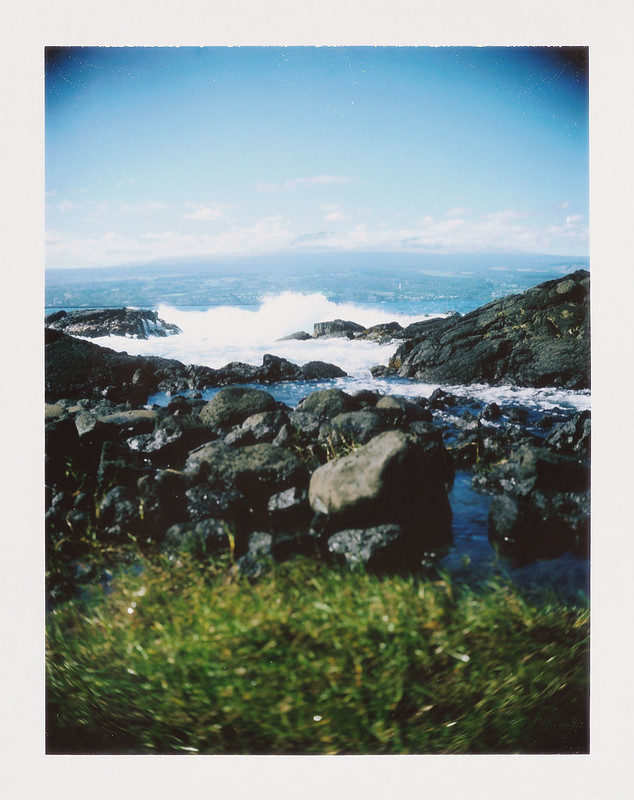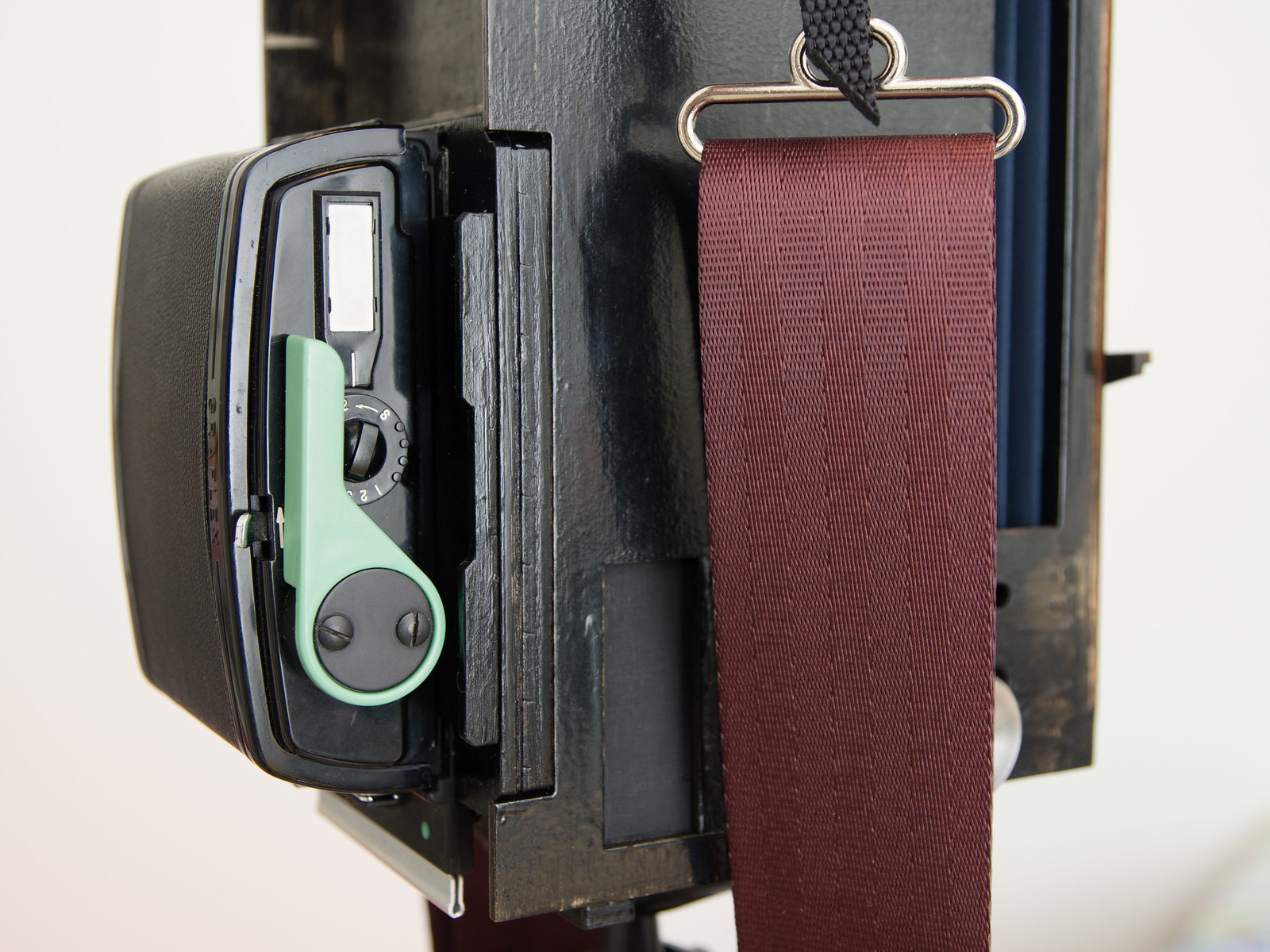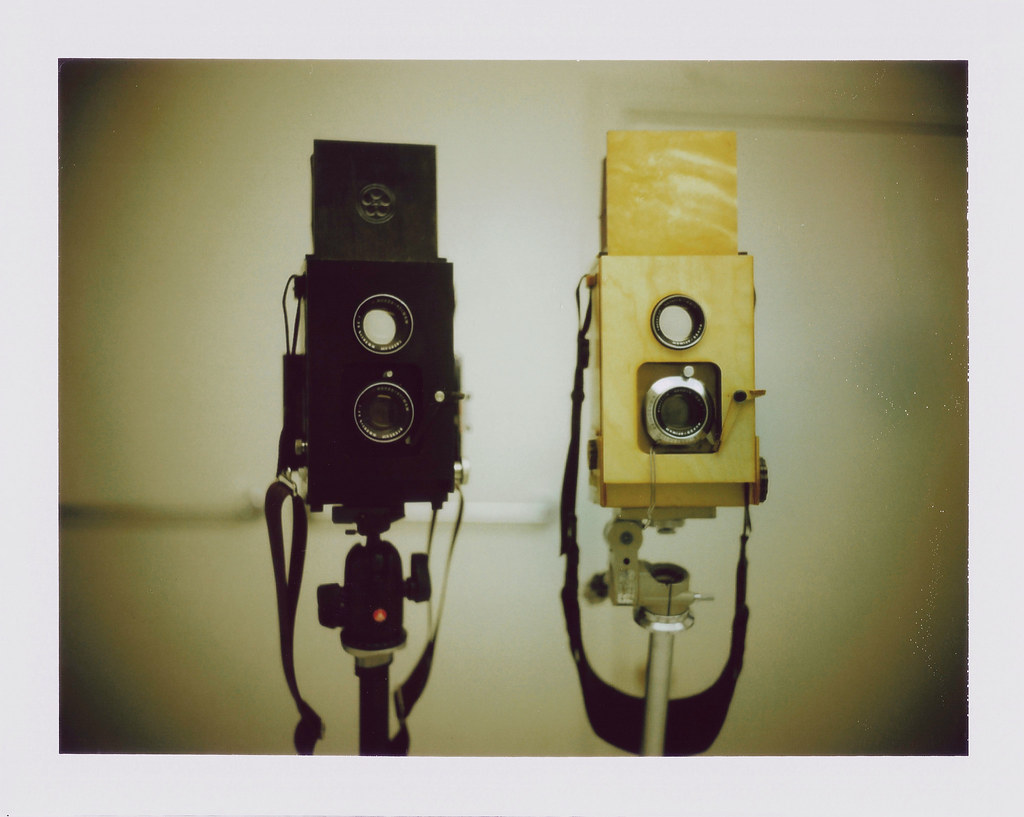The Duo kit requires donor lenses that are NOT supplied in the kit. Luckily, suitable lenses are easy to find on the used marketplace. After reading this entry, I hope you'll have a better idea of the lens you should buy to complete the camera.
First off, you need a Mamiya-Sekor 105mm f/3.5 lens pair. These lenses were originally used for the Mamiya C-series TLR cameras (e.g. C220, C330s, etc).
 |
| Some disassembly required. |
There are four (4) variations of this lens! It is important to understand that there are some subtle differences between each lens, but all will work on Duo, and each is easy to identify:
- "Chrome" - The lens and shutter are chrome.
- "Black" - The lens and shutter are black, and have no red engravings on the lens ring.
- "D" - The lens and shutter are black, and has a red "D" engraving on the lens ring.
- "DS" - The lens and shutter are black, and has a red "DS" engraving on the lens ring.
The biggest difference between the lenses are that the "Chrome" and "Black" lenses are a Tessar optical design (4 elements, 3 groups), and the "D" and "DS" lenses are a Heliar optical design (5 elements, 3 groups). The following are two photos taken using a "Chrome" and a "D" lens:
 |
| "Chrome" lens |
 |
| "D" lens |
Some conclusions drawn from these and other photos:
- The Tessar lenses cover the whole Polaroid frame at infinity focus, with minimal vignetting.
- The Heliar lenses are subject to vignetting of the corners at infinity focus (less of an issue for closer subjects).
- The Heliar lenses seem to have better color rendition and contrast.
And some totally subjective conclusions:
- Due to the different optical designs, the "D" and "DS" lenses require an additional spacer when building the camera (a trivial addition).
- The "DS" lenses have nice features like a DOF calculator/preview, and a self-timer on the shutter.
In short, all of the lenses discussed above will work. The Tessar "Chrome" and "Black" lenses provide better frame coverage at the expense of contrast, and vice versa for the Heliar "D" and "DS" lenses. That said, there should be no vignetting problems on the Heliar lenses when using roll film.
Now what do you do once you get your lens? You get to take it apart, of course! This procedure is easily completed in ~20 minutes with basic hand tools, and is completely reversible.






